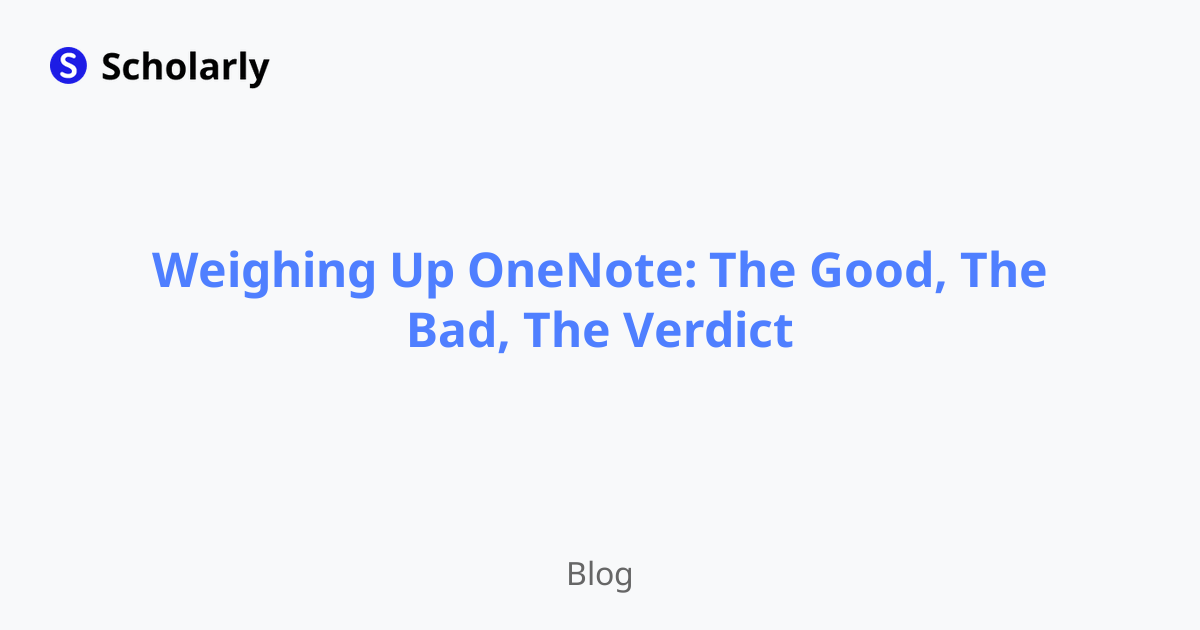Weighing Up OneNote: The Good, The Bad, The Verdict
Explore the advantages, challenges, and overall verdict on Microsoft OneNote. From organization to integration, unravel this digital notebook's potential.

Unpacking OneNote: The Indispensable Tool
Microsoft OneNote, often heralded as an all-in-one digital notebook, aims to replace your paper notebook with endless pages of digital notes.
Keystones of OneNote: The Advantages
Let's look at what makes OneNote stand out:
Integration with Microsoft Office
OneNote integrates seamlessly with other Microsoft Office tools, creating a cohesive ecosystem for your productivity needs.
Unlimited Space
With OneNote, space is not an issue. It offers virtually unlimited pages for your notes and ideas.
Excellent Organizational Features
Organize your notes using sections, subpages, and hyperlinks. This capability simplifies navigation, making note retrieval faster and more efficient.
The Flipside: The Disadvantages
Despite its robust features, OneNote is not devoid of shortcomings:
A Learning Curve
The non-linear note-taking style can be overwhelming initially, especially for those used to traditional note-taking methods.
Syncing Can Be Spotty
Although OneNote allows note synchronization across devices, users have reported occasional syncing issues.
Occasionally Clunky Interface
The complexity of features may result in a clunky, cluttered interface, which can hamper efficiency.
OneNote: The Final Verdict
So, given the pros and cons, is OneNote for you? That largely relies on your specific needs. Its integration with Microsoft Office, unlimited space, and excellent organization options outweigh the occasional syncing issues and learning curve for many users. However, if you prefer linear note-taking and simplicity, weighing other options may prove beneficial.
In conclusion, OneNote can be a powerful tool for the digitally literate and organized mind. Its capacity to integrate and organize can simplify workflows, despite some hurdles. Like any tool, it excels for some and falls short for others, but certainly merits consideration in your digital toolkit.
Try Our Popular AI Study Tools
Transform your study materials into interactive learning experiences with our most popular AI-powered tools:
PDF to Flashcards
Convert lecture notes and textbooks into study flashcards instantly
Text to Flashcards
Turn any text or notes into comprehensive flashcard sets
Image to Flashcards
Convert diagrams and handwritten notes into digital flashcards
YouTube to Flashcards
Generate flashcards from educational video content



